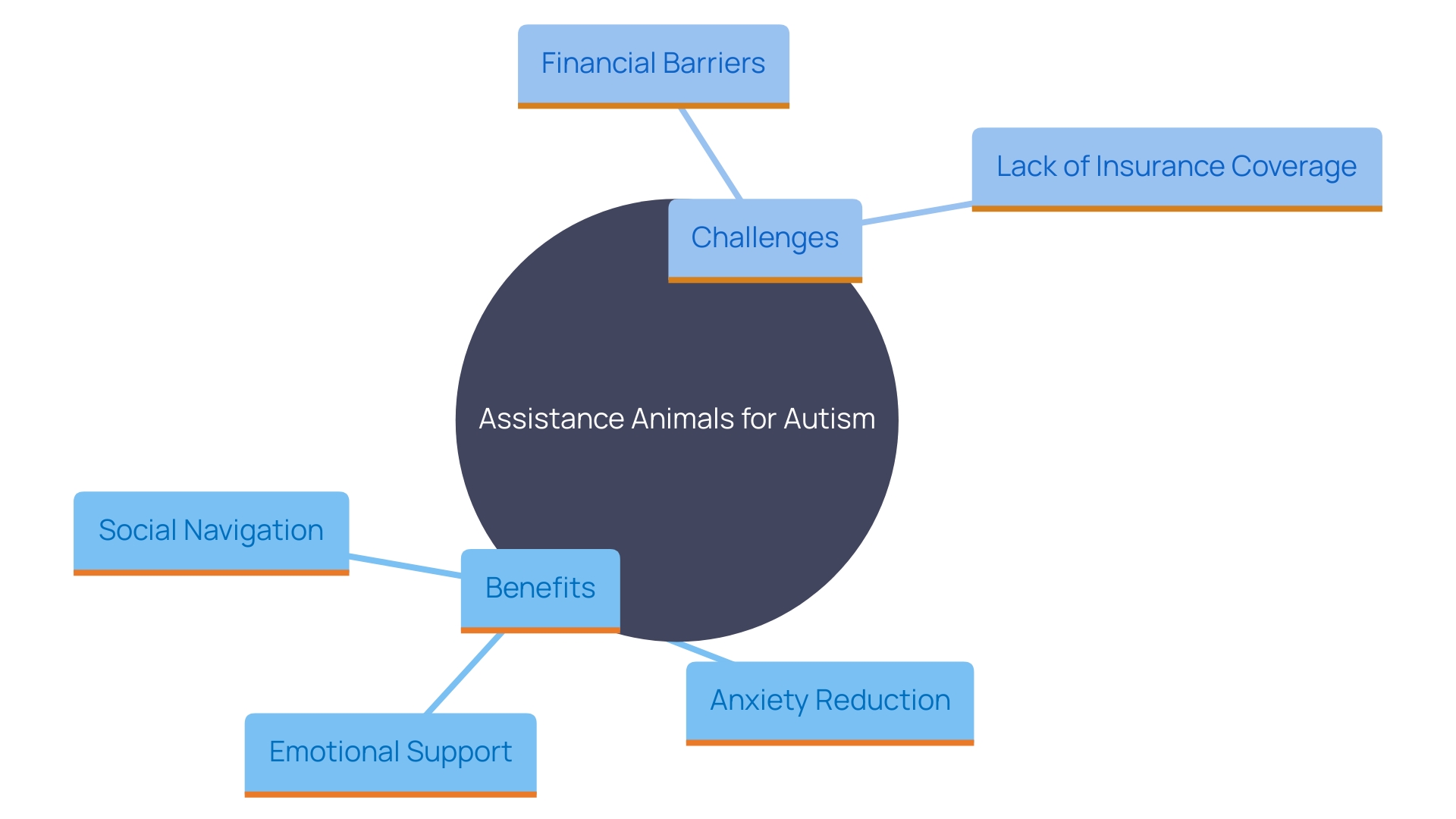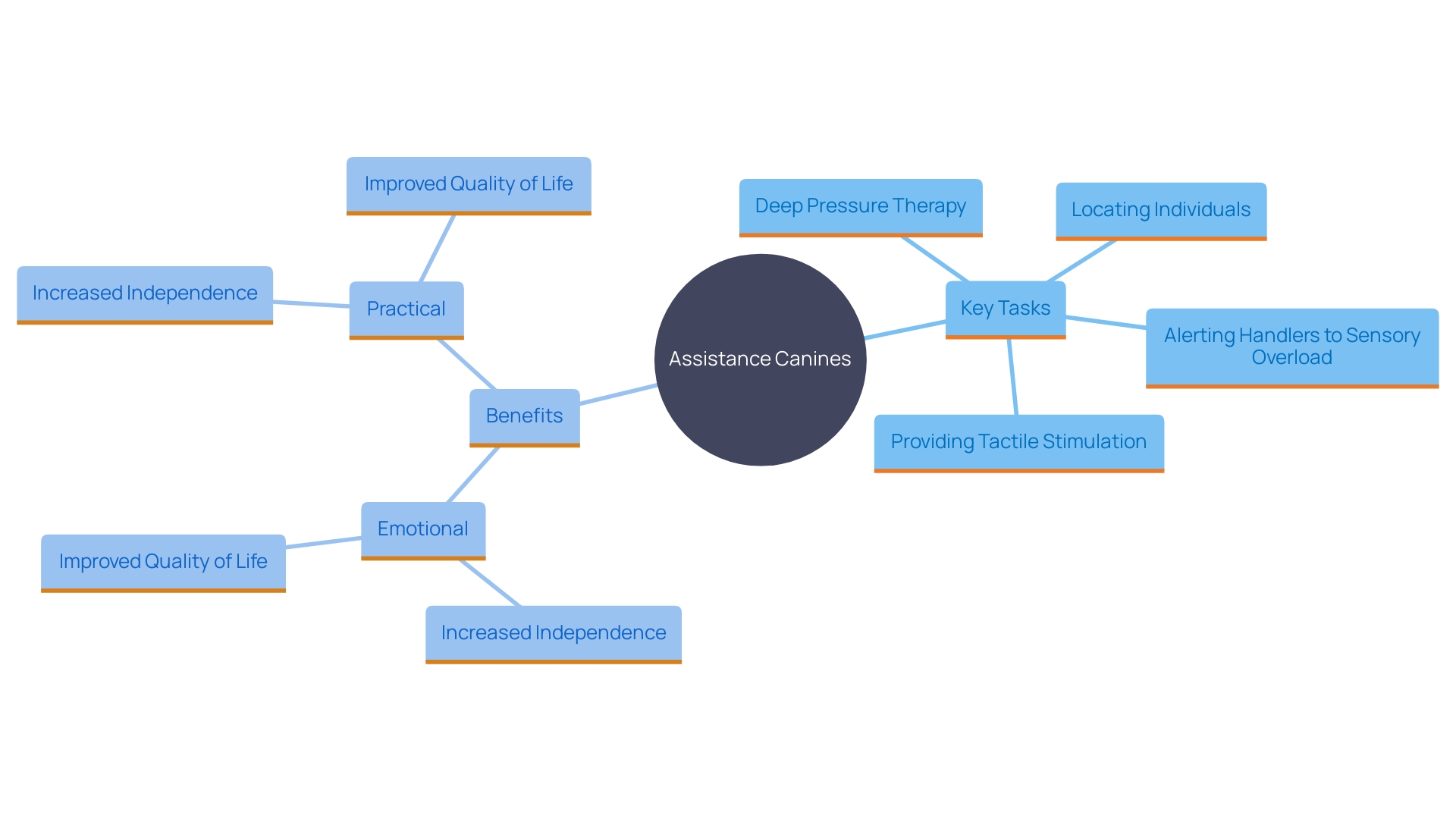Introduction
Service dogs for individuals with autism spectrum disorder (ASD) are more than just companions; they are lifelines that significantly enhance the quality of life for both the individuals they support and their families. These specially trained dogs provide crucial emotional support, comfort, and companionship, which can alleviate anxiety and stress, making social interactions and daily activities more manageable. Dr. Maggie O’Haire's research underscores the profound impact of these dogs, emphasizing the need for rigorous scientific trials to validate their benefits and advocate for broader access.
Despite these undeniable advantages, challenges like financial barriers persist, as noted by Sarah Leighton. No medical insurance currently covers the costs associated with acquiring and maintaining a service dog, posing a significant hurdle for many families. However, ongoing advocacy and research efforts aim to improve accessibility, ensuring that more individuals with autism can experience the transformative support these incredible animals provide.
How Autism Service Dogs Help
Assistance animals for autism greatly improve the quality of life for people with autism spectrum disorder. These specially trained animals provide essential emotional support, comfort, and companionship, which can reduce anxiety and stress. By establishing a feeling of safety, they allow people to navigate social situations with greater ease.
Assistance animals are adept at recognizing and responding to specific behaviors associated with autism, providing timely interventions that can prevent meltdowns or anxiety attacks. Research underscores their impact not only on the individuals they assist but also on their families.
Dr. Maggie O’Haire, principal investigator and Associate Dean for Research at the College of Veterinary Medicine, University of Arizona, highlights the importance of rigorous scientific trials in evaluating these benefits. Working alongside K9s For Warriors, the largest provider of trained assistance dogs for veterans with PTSD, the study aims to pave the way for increased access to assistance dog programs. This research is crucial as it provides policymakers, clinicians, and the public with empirical evidence to support these programs, benefiting both the recipients and the broader community.
Despite the undeniable benefits, challenges remain. Sarah Leighton, PhD Candidate with the OHAIRE Group, notes that no medical insurance company covers the costs associated with acquiring and caring for a service dog. This financial burden can be a significant barrier for many families. However, ongoing research and advocacy strive to enhance access to these invaluable companions, ensuring that more people with developmental differences can experience their transformative support.

Specific Tasks Performed by Autism Service Dogs
Assistance canines for individuals on the spectrum are specially trained to carry out various activities that address the specific requirements of their owners. One crucial task is providing deep pressure therapy, where the dog applies gentle weight to help soothe the person during overwhelming situations. This technique can significantly reduce anxiety and promote a sense of security. Furthermore, these assistance animals are trained to help in locating individuals who might stray, a typical behavior among those with autism. They can alert handlers to potential sensory overload, helping to prevent meltdowns by providing early warning signs. Tactile stimulation is another essential task, where the dog offers physical contact to help ground their handler, making it easier for them to focus and stay present.
These animals become invaluable partners in daily routines, offering both practical assistance and emotional support. For instance, a study conducted by the OHAIRE Group highlights the importance of empirical research in validating the advantages of assistance dogs. Such studies pave the way for increased access to these programs, benefiting both recipients and the broader community. 'The presence of a service dog can significantly enhance the independence and quality of life for individuals on the spectrum, allowing them to navigate their environment with greater confidence and ease.'.

Safety and Anchoring
Ensuring the safety of children on the autism spectrum is a top priority for families. Assistance animals play a crucial role in this by acting as a dependable safety net during outings. These specially trained dogs can execute techniques like 'brace' or 'anchor' to prevent a person from wandering or bolting away. This skill is especially vital in chaotic environments, providing a sense of security for both the child and their parents. With the support of an assistance dog, parents can feel more at ease in public settings, knowing their child is less likely to encounter dangerous situations.
The Impact on Daily Life and Independence
The presence of an assistance dog can significantly change the everyday existence and autonomy of people with developmental disorders. These specially trained canines not only provide emotional assistance but also serve as social enablers, connecting people with the outside world. For instance, Simeon, a young boy with spina bifida and autism, found comfort and confidence with his assistance dog, Bojan, especially during stressful hospital visits. This illustration emphasizes how assistance animals promote relationships with peers and adults, facilitating participation in community activities. Moreover, by creating a sense of safety and emotional stability, service dogs empower individuals to participate in experiences that previously felt overwhelming, thereby enhancing their overall quality of life.
Conclusion
The role of service dogs in the lives of individuals with autism spectrum disorder is transformative, providing essential emotional support, security, and companionship. These specially trained animals not only help alleviate anxiety but also enable individuals to navigate social situations with greater ease. Research highlights the profound impact of service dogs, emphasizing their ability to recognize and respond to specific behaviors, thus preventing potential crises and enhancing the overall quality of life for both the individuals and their families.
Despite the significant advantages these service dogs offer, financial barriers remain a critical challenge. With no medical insurance coverage for the costs associated with acquiring and maintaining a service dog, many families face obstacles in accessing this invaluable support. Advocacy and ongoing research are crucial in addressing these challenges, ensuring that more individuals with autism can benefit from the companionship and assistance that service dogs provide.
The specific tasks performed by these dogs—such as deep pressure therapy, safety anchoring, and sensory alertness—are tailored to meet the unique needs of their handlers. These tasks not only promote emotional well-being but also foster independence, allowing individuals to engage more confidently in daily life and community activities. By bridging the gap between individuals with autism and their surroundings, service dogs serve as vital partners in enhancing social interactions and enriching the lives of those they support.




